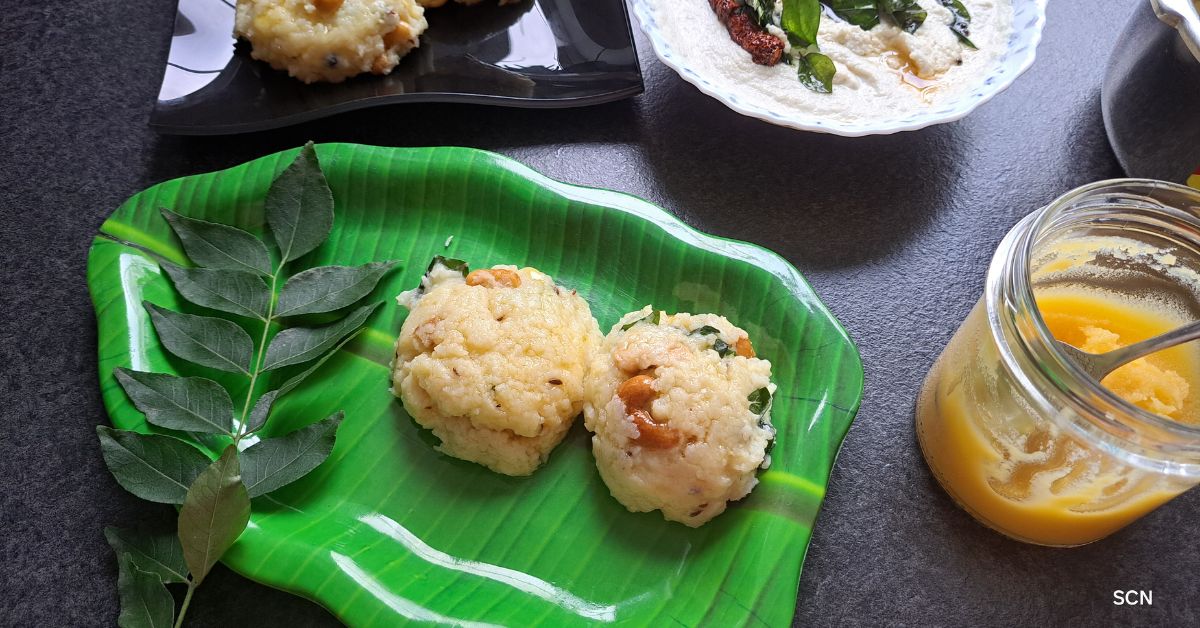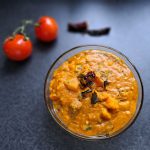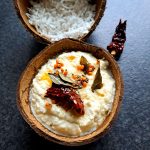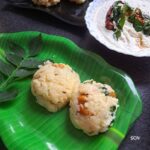Ven Pongal/Khara Pongal

Ven Pongal/Khara Pongal is a traditional South Indian dish that holds a special place in the hearts and palates of many. Also known as Khara Pongal or Ghee Pongal, it is a savoury rice and lentil porridge, typically flavoured with black pepper, cumin, ginger, and ghee (clarified butter). This dish is a popular choice for breakfast, especially during the harvest festival of Pongal, from which the dish derives its name. Pongal is a four-day festival celebrated in Tamil Nadu. A special version of Ven Pongal, known as “Chakkara Pongal,” is prepared with jaggery, ghee, and cashews during this festive time. Ven Pongal’s comforting flavours make it a beloved dish in South Indian cuisine, enjoyed by people of all ages. Whether served during a festive occasion or as a regular breakfast, Ven Pongal continues to hold a cherished spot in the culinary heritage of South India.
Looking for more breakfast ideas? Explore our other delicious and easy breakfast recipes to start your day right!
The main ingredients used in Ven Pongal/Khara Pongal are rice and split yellow moong dal (lentils). Cook the rice and lentils together until they form a soft and creamy consistency. The tempering is a crucial step in preparing Ven Pongal. It involves frying cumin seeds, black pepper, ginger, cashews and sometimes green chillies in ghee or oil. Add this aromatic tempering to the cooked rice and lentil mixture to impart a rich and flavorful taste to the dish. The use of ghee in Ven Pongal not only enhances its flavour but also contributes to its creamy texture. Ghee adds a rich and buttery essence to the dish, making it a satisfying and comforting meal. The balance of spices and the addition of cashews or peanuts during the tempering process add a delightful crunch to each bite.
You can serve Ven Pongal with coconut chutney and sambar, a lentil-based vegetable curry.


Looking for a delightful contrast? Try our Sweet Pongal recipe—a luscious, festive companion to the savoury flavours of Ven Pongal!

Ven Pongal/Khara Pongal
Ingredients
- ½ cup white raw rice
- ½ cup split yellow moong dal
- 1 tbsp ghee
- 3 ½ – 4 cups water
- Salt
- Pinch asafoetida/hing
- Hot milk if needed
- 1 tsp sugar
Tempering
- 3 tbsp ghee
- ½ tsp cumin seeds
- 2 tsp peppercorns
- Pinch asafoetida/hing
- 1- inch size ginger finely chopped
- 10-15 cashews
- A few curry leaves
Instructions
- Wash the rice and lentils together in plenty of water and soak them in water for 20 minutes.
- In a heavy-bottomed pan or pressure cooker, heat 1 tablespoon of ghee over medium heat.
- Add the drained rice and lentils and stir well to coat them with the ghee for 4-5 minutes. Add water, salt and asafoetida/hing. The amount of water may vary depending on the rice used. This is an approximate amount of water.
- Pressure cook this for 4-5 whistles or until the mixture is cooked to a creamy consistency. If using a regular pan, cover and cook until the rice and lentils are soft and well-cooked, stirring occasionally. If you prefer a creamier texture, you can mash it slightly.
- If the mixture is too thick you can add hot milk until it reaches your desired consistency.
- Once the Ven Pongal is cooked add a pinch of sugar (optional) to balance all the taste. Heat a few tablespoons of ghee in a small pan. Add a few cashews and fry until golden brown and keep them aside.
- In the same ghee add cumin seeds, ginger, peppercorns, asafoetida/hing and curry leaves.
- Pour this and the cashews over the cooked Ven Pongal and mix well.
- Your Ven Pongal is now ready to be served hot. It is often enjoyed with coconut chutney and sambar.
Notes
Frequently Asked Questions
Ven Pongal, also known as Khara Pongal, is a savoury South Indian dish made from rice and split yellow moong dal, seasoned with spices, black pepper, and cumin, and tempered with ghee and cashews.
Ven Pongal is a savoury dish with spices and is served as a breakfast item or side dish, while Sweet Pongal is a dessert-like version made with jaggery and cardamom.
Yes, traditional short-grain rice like Sona Masoori or Ponni rice is commonly used, but you can also use basmati rice or brown rice for a different texture.
While ghee adds flavour and aroma, you can replace it with oil if you prefer. Coconut oil can be a good alternative for a distinct flavour.
To reduce the spice, adjust the amount of black pepper. You can also avoid adding whole black peppercorns if preferred.
The consistency of Ven Pongal is naturally soft and mushy. However, if it’s too sticky, you may have added too much water. Reduce water next time or cook on a low flame to control the texture.
Yes, You can add vegetables like carrots, peas, and beans to make it more nutritious.
Store leftovers in an airtight container in the refrigerator for up to 2 days. Reheat it by adding a bit of water and stirring to restore the texture.
Ven Pongal pairs well with coconut chutney, sambar, or a simple pickle.

3 thoughts on “Ven Pongal/Khara Pongal”